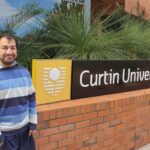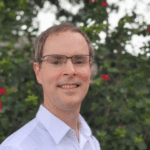Children often idolise musicians, actors and athletes, but the person Sean Bong most aspired to be was his local GP. After countless doctor visits throughout his childhood to treat epistaxis (persistent nosebleeds), Bong grew to admire and respect the medical professionals who listened, and genuinely wanted to improve people’s quality of life.
Bong himself is now set to become an idol for future generations of children as he joins the first cohort of students starting a medical degree at Curtin University’s new $49 million medical school, designed to conform to Green Star certification.
A second medical school building is being built in Midland, for third and fourth year medical students to use as a clinical base, opening in 2019.
“Studying medicine has been a long time dream of mine,” says Bong. “After the grind of the past few years [of high school], it was unbelievably gratifying to have all the hours and effort I put in come to fruition in the form of my first preference university offer – I couldn’t be more excited.”
The Perth Modern School graduate is one of 60 students enrolled in the Bachelor of Medicine, Bachelor of Surgery degree, which emphasises primary care, chronic disease, ageing, Indigenous and regional health.
Curtin Vice-Chancellor Professor Deborah Terry says the course will allow graduates to meet the needs of health areas that are significantly under-serviced, and prepare them for practice in rural and remote communities.
“Our vision is to create highly competent doctors who integrate into an inter-professional environment,” Professor Terry says. “This vision has been built on Curtin’s strong health sciences foundation, and on a philosophy of innovation and teaching excellence.”
Curtin offers the only five-year undergraduate entry program for medicine in Western Australia. The state’s other medical schools require students to complete a three-year bachelor degree before enrolling in a four-year medical course.
For Bong, this means he can start his dream career as soon as possible.
“A major reason why I chose Curtin’s degree is because it condenses a majority of the bookwork into a few years, which allows us to get out there and into hospitals and clinics earlier, rather than just staying in classrooms,” he says.
An independent report commissioned by Curtin in 2013 outlined the repercussions for Western Australia if its doctor shortage was not addressed. These included higher medical costs, longer waiting times, increased pressure on emergency departments, and reduced access to health and medical services for people living in rural, regional and outer metropolitan areas.
Curtin Dean of Medicine Professor William Hart says students will be trained to the highest standards of the Australian Medical Council, and will be equipped to address a range of healthcare challenges.
“We want school leavers to see Curtin Medical School as their first choice for training as a generalist, caring and compassionate doctor,” Hart says.
Bong is looking forward to future possibilities as a qualified GP.
“Medicine is a lifelong journey,” he says. “It involves continuous learning as the field grows and changes, which I think will be both a challenge and delight to keep up with.”



